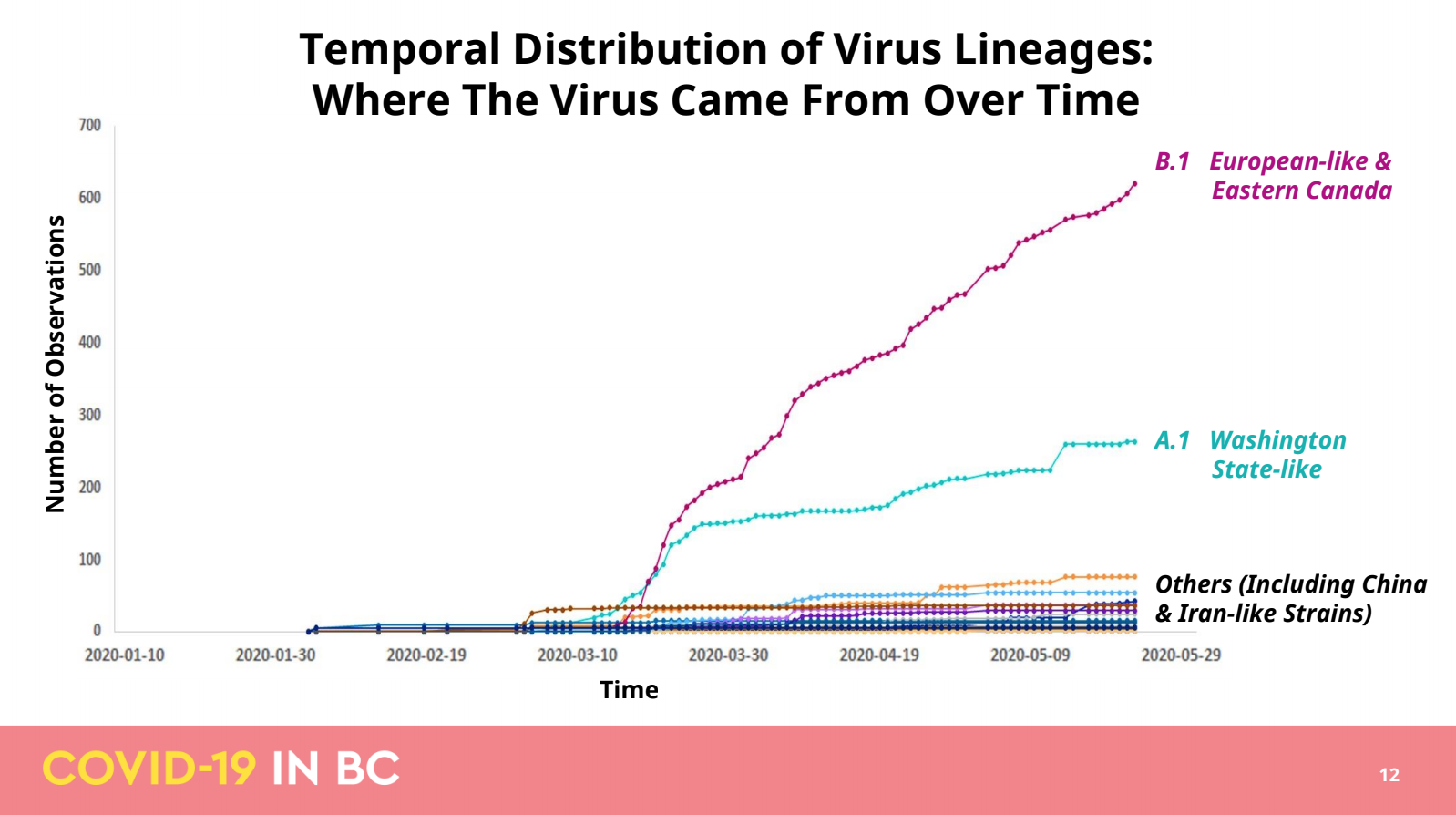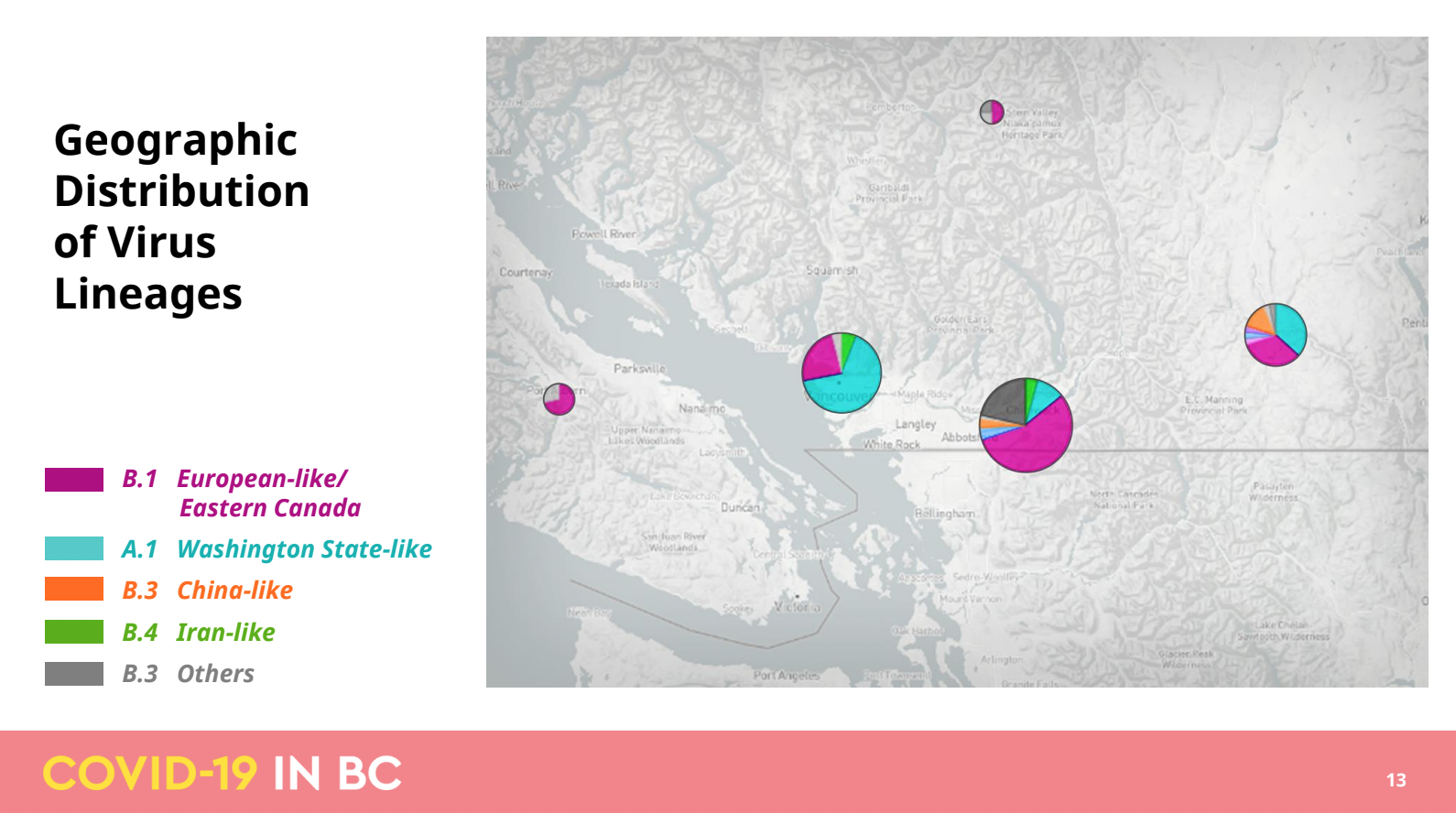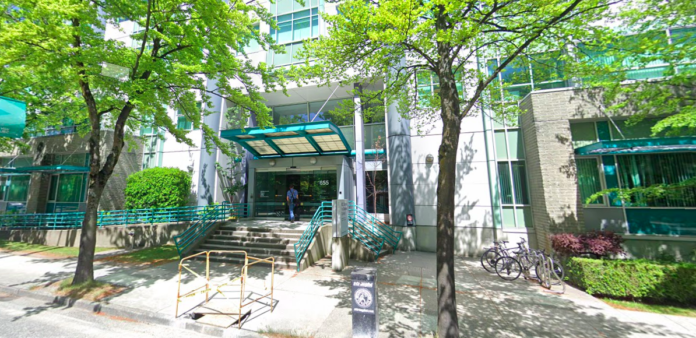More than one strain of COVID-19 has been detected among the infected population in British Columbia, and according to new data, some have been easier to manage than others.
On Thursday, the B.C. Ministry of Health released a large amount of information that demonstrates their understanding of the virus to date, including results from genomic sequencing.
The province has seen various strains of COVID-19 infecting its population, the most prevalent of which were strains from China, Iran, Washington State and Europe/Eastern Canada.
See also: Vancouver Island Health region officially has zero active COVID-19 cases
“The virus’ genome changes over time. This one is not as fast a changer as influenza but it changes at about two base pairs per month,” said Dr. Bonnie Henry on Thursday.
“But that is enough that we can tell the origin of where it came from.”
Newly released data shows that while the first cases in B.C. were brought by travellers hailing from China and Iran, spread of COVID-19 from those initial cases were quickly brought under control.

The most difficult cases to control came from individuals who travelled to B.C. from Europe or Eastern Canada, or from Washington state, where there continues to be hundreds of new cases per day.
Dr. Henry has identified a cluster outbreak from a dental conference in Vancouver back in March as the epicentre of many of the province’s cases.
Once new cases started popping up across the province, many reported that they had attended that specific conference. After six infected cases were found to be linked to that cluster, Dr. Henry issued an order for all conference attendees to self isolate for 14 days.
Data released on June 3 shows that a total of 87 test-positive cases of COVID-19 resulted from that single event, all of which carried the European/Eastern Canadian strain of the virus.
Around March 12, the same time as the dental conference, large numbers of another new strain of COVID-19 began to emerge in B.C.—the one from Washington state.
Just a few days later, on March 18, Canadian Prime Minister Justin Trudeau announced a temporary closure of the Canada-U.S. border to all but Canadian citizens and essential travellers.
Today it’s clear that this was a wise move, as data shows the highest percentage of COVID-19 cases in the Vancouver Coastal Health region appears to have come from Washington state.
The following chart shows the geographic distribution of the different virus strains in B.C.:

According to new data, southern Vancouver Island appears to have escaped the worst of this pandemic, as the region saw just 43 test-positive cases.
But the numbers don’t tell the whole story. In answer to Victoria Buzz’s question on Thursday, Dr. Henry stated that there were a number of epidemiologically-linked cases of the virus that went untested on Vancouver Island due to limited availability of test kits at the time.
“It is very likely that we had more impact than what is reflected by just the cases that have tested positive,” she added. “We will be needing to look at serology testing to understand the impact.”
As of June 3, the COVID-19 transmission and death curves in B.C. have flattened, and there are no remaining active cases in several health regions including Vancouver Island.
However this does not mean the risk is over.
“We know that people are still moving, there’s still risk out there, and we’re still seeing cases come in from Alberta, the U.S., and other places,” explained Dr. Henry.
So for the time being, public health officials will not be easing restrictions on a regional basis.



